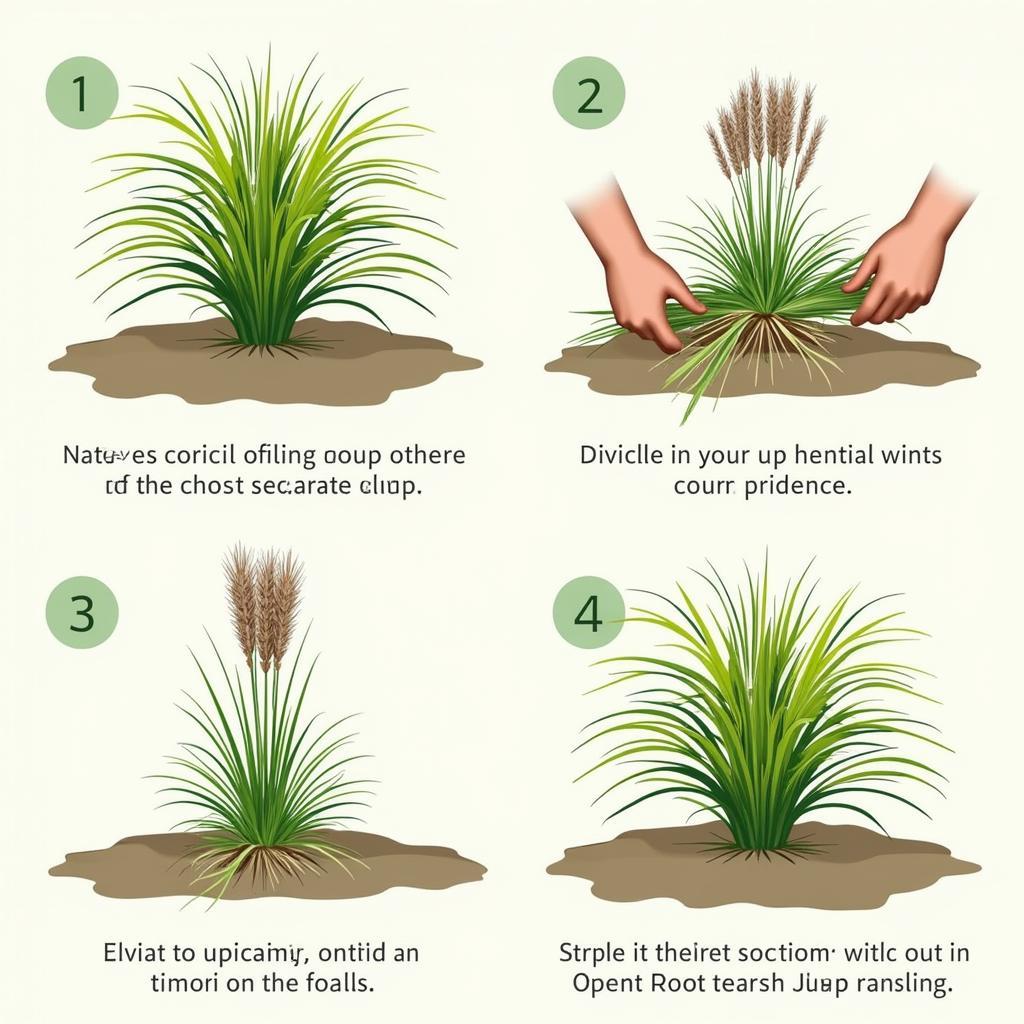African Breeze Pennisetum: The Purple Colour Maker
African breeze pennisetum, also known as Pennisetum setaceum ‘Rubrum’, is a popular ornamental grass prized for its striking purple foliage and airy, graceful flower plumes. This eye-catching plant brings a touch of exotic beauty to gardens and landscapes, adding texture, movement, and a vibrant splash of colour. This guide explores the fascinating world of African breeze pennisetum, covering its origins, characteristics, cultivation tips, and the secrets to maximizing its purple colour potential.
Unveiling the Beauty of Pennisetum setaceum ‘Rubrum’
African breeze pennisetum is native to tropical Africa and belongs to the Poaceae family. Its burgundy-tinged leaves, ranging from deep purple to reddish-brown, create a stunning contrast against other greenery. The plant typically grows to a height of 2 to 4 feet, with a similar spread, forming a dense, upright clump. From late summer to autumn, it produces attractive, feathery flower plumes that add to its ornamental appeal. These plumes, often tinged with pink or purple, dance gracefully in the breeze, creating a mesmerizing display.
This grass is a relatively low-maintenance plant, making it a popular choice for both experienced and novice gardeners. It thrives in full sun and well-drained soil, tolerating a wide range of soil types, including sandy and clay soils.
 African Breeze Pennisetum Showing its Purple Foliage
African Breeze Pennisetum Showing its Purple Foliage
Maximizing the Purple Colour of Your African Breeze Pennisetum
While the ‘Rubrum’ cultivar is naturally inclined towards purple hues, there are ways to intensify the colour and ensure your plant looks its best. Adequate sunlight is crucial. At least six hours of direct sunlight per day is necessary for optimal colour development. Without enough sun, the foliage may revert to a greener shade.
Well-drained soil is equally important. While the plant tolerates various soil types, consistently wet soil can hinder growth and dilute the purple colour. Amending the soil with organic matter, such as compost, improves drainage and provides essential nutrients.
Caring for Your African Breeze Pennisetum Purple Colour Maker
African breeze pennisetum is relatively drought-tolerant once established. However, regular watering during dry periods, especially in the first year after planting, encourages healthy growth and vibrant colour. Avoid overwatering, as this can lead to root rot.
Pruning is another essential aspect of care. In late winter or early spring, cut back the old foliage to make way for new growth. This promotes bushier growth and prevents the plant from becoming too woody. Fertilizing in the spring with a balanced fertilizer helps support vigorous growth and enhances the purple colouration.
Propagating African Breeze Pennisetum
Propagating African breeze pennisetum is relatively easy, usually through division. In spring, divide established clumps into smaller sections, ensuring each section has a healthy root system. Plant the divisions in well-drained soil and water regularly until established.
 African Breeze Pennisetum Propagation Through Division
African Breeze Pennisetum Propagation Through Division
Conclusion
The African Breeze Pennisetum Purple Colour Maker is a stunning addition to any garden or landscape. With its striking purple foliage, graceful plumes, and ease of care, it offers a touch of exotic beauty with minimal effort. By following these simple tips, you can ensure your African breeze pennisetum thrives and displays its vibrant purple colour to its fullest potential.
FAQ
- Is African breeze pennisetum invasive? In some climates, it can be. Check with local authorities before planting.
- When should I prune African breeze pennisetum? Prune in late winter or early spring.
- How do I propagate African breeze pennisetum? The easiest way is through division in the spring.
- What kind of soil does African breeze pennisetum prefer? Well-drained soil.
- How much sun does African breeze pennisetum need? At least six hours of direct sunlight per day.
- How often should I water African breeze pennisetum? Water regularly during dry periods, especially in the first year.
- What is the best fertilizer for African breeze pennisetum? A balanced fertilizer.
Need more help? Contact us at Phone Number: +255768904061, Email: kaka.mag@gmail.com or visit us at Mbarali DC Mawindi, Kangaga, Tanzania. We have a 24/7 customer service team.

